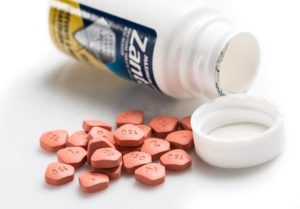Port-a-caths—also commonly referred to as implanted ports—are medical devices used to assist healthcare professionals in accessing veins. With these devices implanted beneath the skin, doctors or nurses can administer intravenous medication quickly and easily.
These devices have proved useful for their intended purpose, but they have also developed a reputation for being dangerous. Serious health risks, including infections, have been linked to these devices. A mass tort lawyer from Van Law Firm could advise you if you are facing health issues after using these devices.
Understanding the Design of Implanted Ports is Helpful
When considering the health risks of implanted ports, it is helpful to understand how these devices function. First and foremost, each device is made up of two distinct parts. These parts include the catheter, a flexible tube commonly made from silicone that enters a vein within the body. The second part is the port, the device inserted beneath the skin and connected to the catheter.
The purpose of this device is to allow for the administration of intravenous medication without needles or injections. This approach allows medical professionals to save time while letting patients avoid the pain of constantly being stuck with needles.
For a free legal consultation, call (725) 900-9000
Infections Are a Common Health Risk
Infections are arguably the most common health consequence of using these implanted devices. Although countless factors can lead to an infection, one of the most common factors involves the catheter degrading while in the body.
Infections can occur among patients with port-a-cath devices, especially for those individuals who have had the implant in their body for an extended period of time. Over time, the catheter portion of the implant can begin to break down. Miniscule cracks in the tubing can allow bacteria into the catheter, where the body’s immune system cannot fight back.
There are several signs of infection to be aware of. The most common examples include signs of redness or swelling around the port. Infections can also result in a high temperature, even when other symptoms are not yet recognized. As infections worsen, it is possible for a person to feel breathless or dizzy. In the most serious of cases, these infections could be fatal.
Fractured Catheters Can Lead to Devastating Injuries
One of the most dangerous complications related to these devices is the risk of cracking or fractures. Poorly designed port-a-cath devices can break down while still in the body, leading to various health issues. The most significant of these issues is the possibility of pieces of fractured catheters traveling through the body and causing damage.
When tiny, fractured pieces of these catheters break off, they can enter the bloodstream. Their sharp edges can cause severe damage to the blood vessels that carry them. In a worst-case scenario, these pieces can even enter the heart or other organs and cause serious injuries.
In addition to damaging healthy tissue, these pieces could block arteries or diminish blood flow. Wounds caused by these fractured pieces could also cause blood clots, which could have significant health implications. Under the worst circumstances, these injuries could have fatal consequences for a patient.
Click to contact our personal injury lawyers today
Blood Clots Are Also Possible
Another potential medical condition to be aware of is the possibility of blood clots. Any time a catheter is inserted into a vein, the walls of that vein can become inflamed. Over time, irritation caused by the catheter could cause tiny blood clots to form.
In many cases, it is possible to treat these clots with medication. However, serious health risks can occur when a clot travels to a different part of the body. Clots can travel through veins, where they can lead to life-threatening complications. For example, a clot that travels to a person’s heart could cause a heart attack. Other serious health issues linked to blood clots include deep venous thrombosis, stroke, or arterial thrombosis.
Unfortunately, the risk of blood clots increases when these port-a-cath devices are defective. Defective catheters tend to break down, resulting in cracks or fractures that increase the risk of inflammation and clots. These defects could result in a viable case for compensation against the device manufacturer.
Complete a Free Case Evaluation form now
Catheter Migration Can be Painful
There are situations where the entire medical device could become untethered from the tissue and migrate within the body. Most of the time, the health consequences from this migration are less severe compared to fractured devices. However, this can be a painful experience requiring medical intervention.
For some people, it becomes necessary to have a series of procedures to address migrating port-a-cath devices. This includes having the migrating device removed and additional procedures to replace it.
Complications Can Occur When removing Port-a-Cath Devices
Some patients also face medical consequences during the removal of their port-a-cath devices. Even when removal goes according to plan, it can result in swelling, bruising, and pain that lasts for three to five days.
In some cases, additional medical complications can occur when these devices are removed. This is especially true in cases where the device was defective. Signs of infection could persist after the removal of the device. If the catheter fractures while in the body, those broken pieces continue to pose serious health risks even after the device is removed.
Discuss Your Options With a Defective Medical Device Attorney Today
If you are living with health issues caused by a defective port-a-cath device, you deserve legal counsel who will aggressively fight for you. There are common dangers and health risks associated with these devices when they are defective, and the manufacturers could be liable for any of these conditions.
The team at Van Law Firm is ready to help you seek justice for your medical injuries. Contact us right away to discuss your options during a free consultation.
No obligation consultations are always free.
Let Us Help You! Call Now: (725) 900-9000Client Testimonials
Related Videos















